The Alphabet: Learning, Teaching & Practice
Toddlers, preschoolers, and kindergarteners are like sponges. As they interact with others in their environment, they “soak up” basic literacy skills.
Young children learn new literacy skills through play, exploration, observation, and by listening and speaking. Parents and teachers can leverage children’s background knowledge and experiences to foster a love for literacy and to build a strong foundation for later reading and writing skills.
One critical skill to build a solid literacy foundation is alphabet knowledge. Research tells us that children who are able to identify and name the letters of the alphabet, as well as the sounds they make, will have early reading success. Although alphabet knowledge is a vital early literacy skill, educators and parents alike often have questions about how to teach the ABCs.
Fortunately, Learning Without Tears has many solutions to make learning and teaching the alphabet easy and fun.
Teaching the Alphabet
The most common question we hear is, what order should I teach letters?
The Handwriting Without Tears developmental teaching order helps children master handwriting skills in the easiest, most efficient way. Instead of teaching 52 letter symbols with a mishmash of different sizes, positions, and confusing starting places, we divide and conquer.
Developmentally, capitals are easier to write so we teach them first. The capital teaching order helps teach correct formation and orientation while eliminating reversals. Learning to write capitals first makes it easy to transition to lowercase letters.
We teach lowercase c, o, s, v, and w first because they are exactly the same as their capital partners, only smaller. By teaching capitals first, we have prepared children for nearly half of the lowercase letters that are similar in formation.
Alphabet Learning Activities
Strong school-to-home partnerships help children build self-esteem, curiosity, and motivation to learn new things. The alphabet is a great way to build a partnership with families and schools.
Older siblings, parents, grandparents, teaching assistants, aunts, uncles, and teachers can all help children learn letters. Children reap the benefits when families and schools share their unique perspectives about children in an open, regular, and meaningful way.
Children learn letters and their sounds best through hands-on, multisensory, developmentally appropriate activities.
Here are a few of our favorite ways to teach the alphabet:
- Sing Songs
One fun way that schools and families can partner is to teach young children a variety of ABC songs and expose them to written capital and lowercase letters as they sing. Learning Without Tears has several alphabet songs to make learning the alphabet fun!
Children have fun air writing and using their bodies to form letters when they listen to songs like Frog Jump Letters and Diver Letters’ School. Watch this video of a teacher and children singing and moving to the Frog Jump Letters song.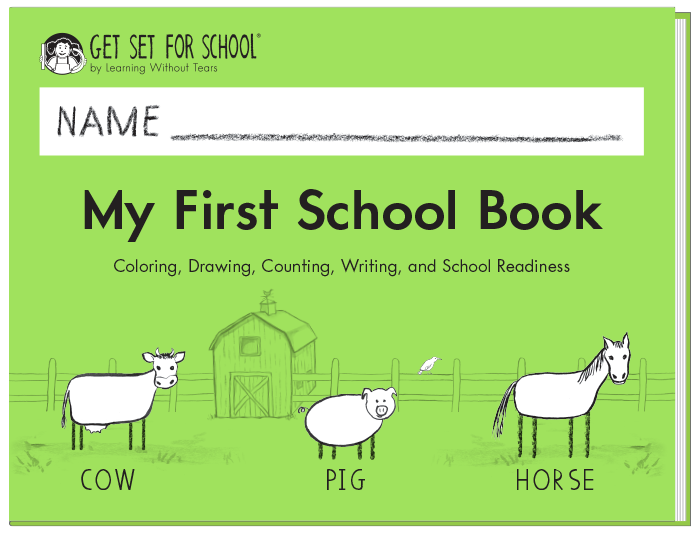
Children can dance and sing to the Alphabet Boogie—an upbeat, swing-like song—in their homes and in school. Parents and teachers can help children memorize the alphabet by singing and moving to the Alphabet Song or Inside, Outside. Both of these songs help children understand that L-M-N-O-P are five different letters.
Encouraging children to point and identify capital and lowercase letters as they sing and move helps children recognize letters. Children enjoy identifying capital letters in My First School Book and lowercase letters in My First Lowercase Book. Learning Without Tears also has songs to help children learn to write letters correctly.
- Read, Read, and Read Some More
Another way schools and families can partner to build literacy skills is to read to children regularly. Reading with young children helps foster a love for reading. It helps children build vocabulary and learn the sounds of letters in spoken language.
As adults point to words while reading, children learn to read from left to right and see that letters together make words. While children listen to printed words become stories, they learn new things.
Learning Without Tears Mat Man book set features Mat Man, a beloved character who teaches children all about shapes, occupations, transportation, and opposite words. Electronic versions of Mat Man books are located on the Pre-K Interactive Teaching Tool and hardcover books are located here.
Family members and teachers will also love using Line It Up to build literacy skills. They can read fiction and informational stories to reinforce comprehension skills and use Line It Up’s Coloring and Letter Cards to help children learn letter sounds and syllables, as well as to trace capital letters.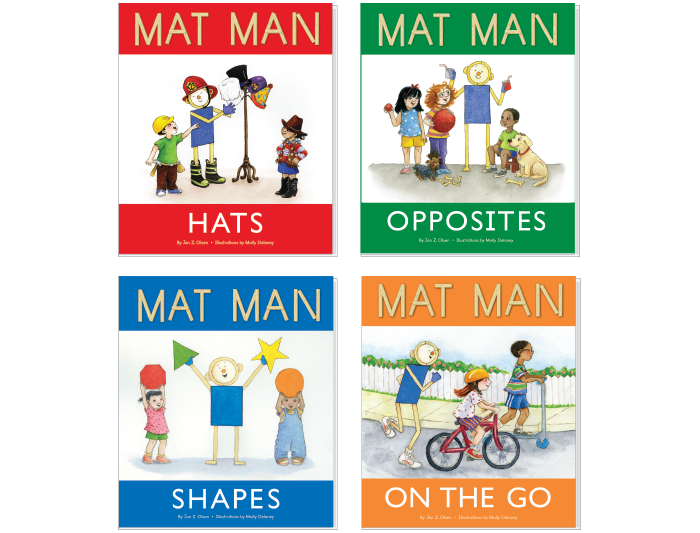
- Make it Personal
Families and schools can also partner to support one another when teaching children the letters in their names. Not only do children enjoy learning the letters in their names, they like learning the letters in their friends’ names too. The letters in a child’s name are often the first letters they learn to recognize and write.Teachers and families can help children learn how to trace the letters in their name by using customizable worksheets with the Learning Without Tears A+ Worksheet Maker. Children can learn to trace their name in all capital letters or in title case. Teachers and families can access a free version of A+ Worksheet Maker here.
Learning Without Tears child-friendly language helps children to learn how to form capital and lowercase letters. When families and teachers use the same, consistent language, children are able to have skills reinforced at home and school. Download our capital and lowercase letter formation charts here.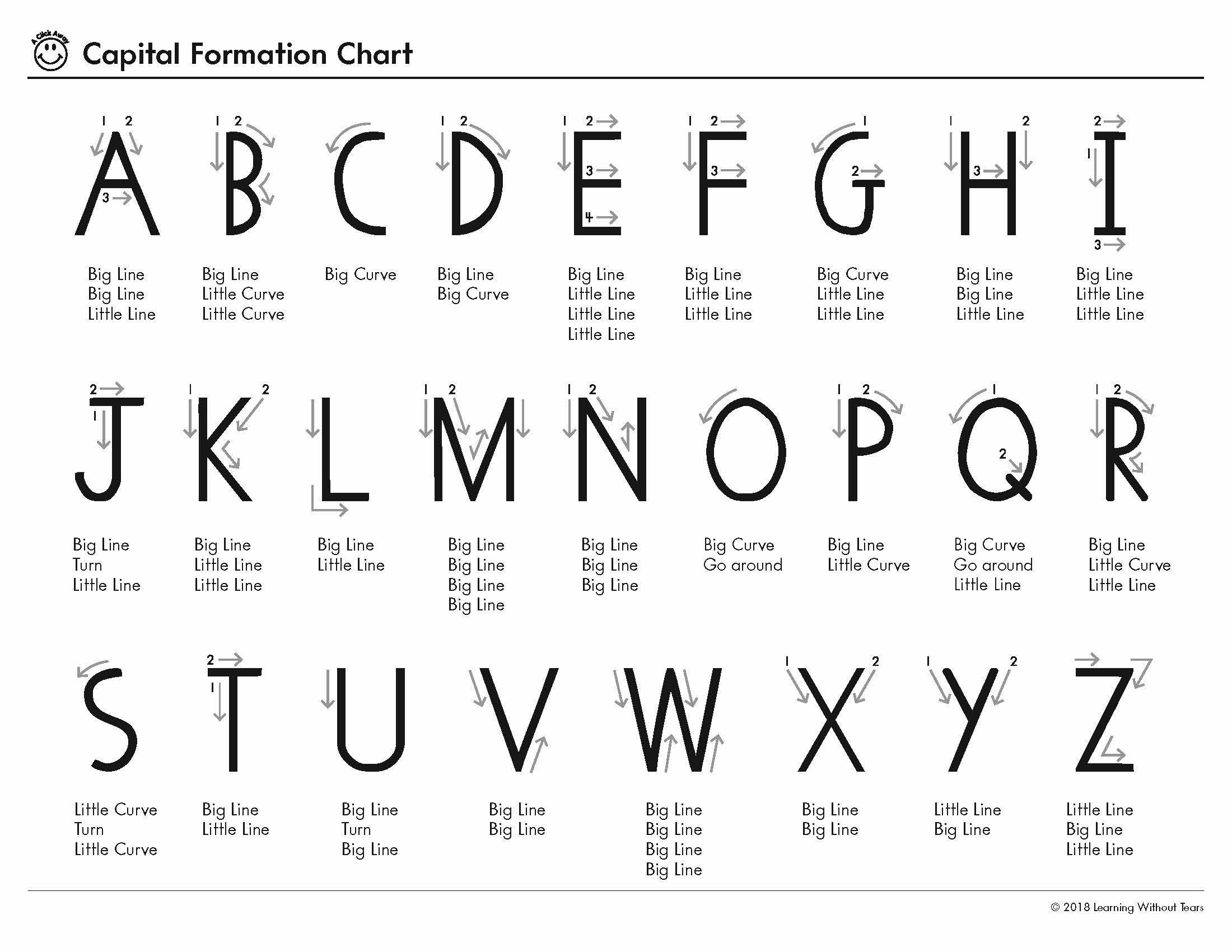
Watch our founder, Jan Olsen teach a child how to write her name in title case on our Double Line Blackboard.
Although children may learn the letters of their names first, we recommend that children learn capital letters first because they are developmentally easier to recognize and write than lowercase letters. Children experience success learning letters with a developmental teaching order where children will learn vertical and horizontal letters first, then letters with curves, and lastly letters with diagonals. Children enjoy watching letters come alive with the Pre-K Interactive Teaching Tool’s animated letters.
- Teach Alphabet by Letter
Children have fun learning to build letters right-side up and facing them correctly with Learning Without Tears Capital Letter Cards, the Mat, and Wood Pieces for Capital Letters. Children learn size, sequence, and position as they build letters out of wood using the letter cards as a guide. Letter cards also help children build vocabulary and learn letter sounds.
Families and teachers can challenge children to build letters on the Mat for Wood Pieces, which requires children to build a capital from memory. It is important for family members and teachers to always model building the letter first, so children are set up for success. Watch videos on how to use the Wood Pieces for Capitals with the letter cards and blue mat.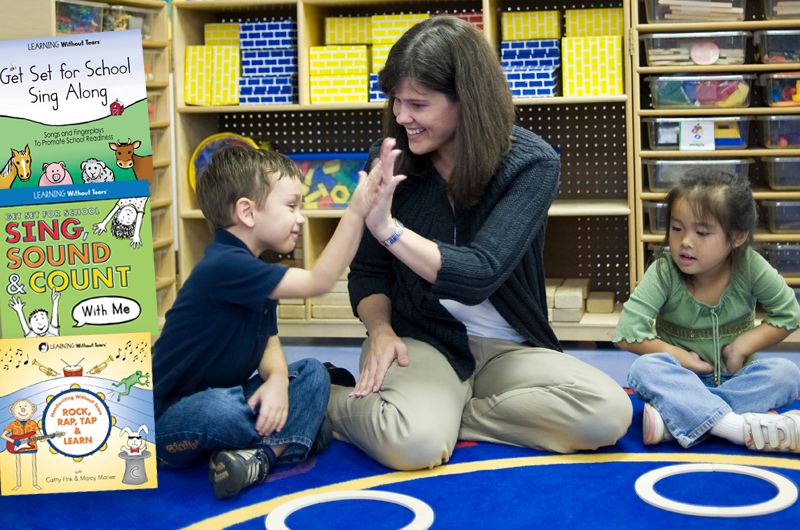
- Build Fine Motor Skills
Families and teachers can also help children build fine motor skills while they learn to build letters with Roll-A-Dough Letters. Children will pinch, squeeze, roll, and press dough to build letters. They will learn size, shape, and how to form letters in the correct sequence.
Stamp and See Screen also helps children learn to recognize, sequence, and form letters using magnetic wood pieces and magnetic chalk. Children love to stamp the letters and write with magnetic chalk.
- Wet-Dry-Try
Children also love to wet, dry, and try capital letters using the Slate Chalkboard and lowercase letters with Magnetic Lowercase and Blackboard Set. First, a family member or teacher models a letter, then children trace over the letter with a wet sponge, dry towel, and then again with chalk.
Children also enjoy learning their letters using the electronic version of Wet-Dry-Try on the Pre-K Interactive Teaching Tool or on the Wet-Dry-Try App. When children use the Wet-Dry-Try app, children will see and hear the letter written by the personal handwriting coach, and then will trace the letter with the virtual sponge, towel, and chalk. Children will receive immediate feedback on their letter formation in this game-like app. Read more about the advantages of Wet-Dry-Try.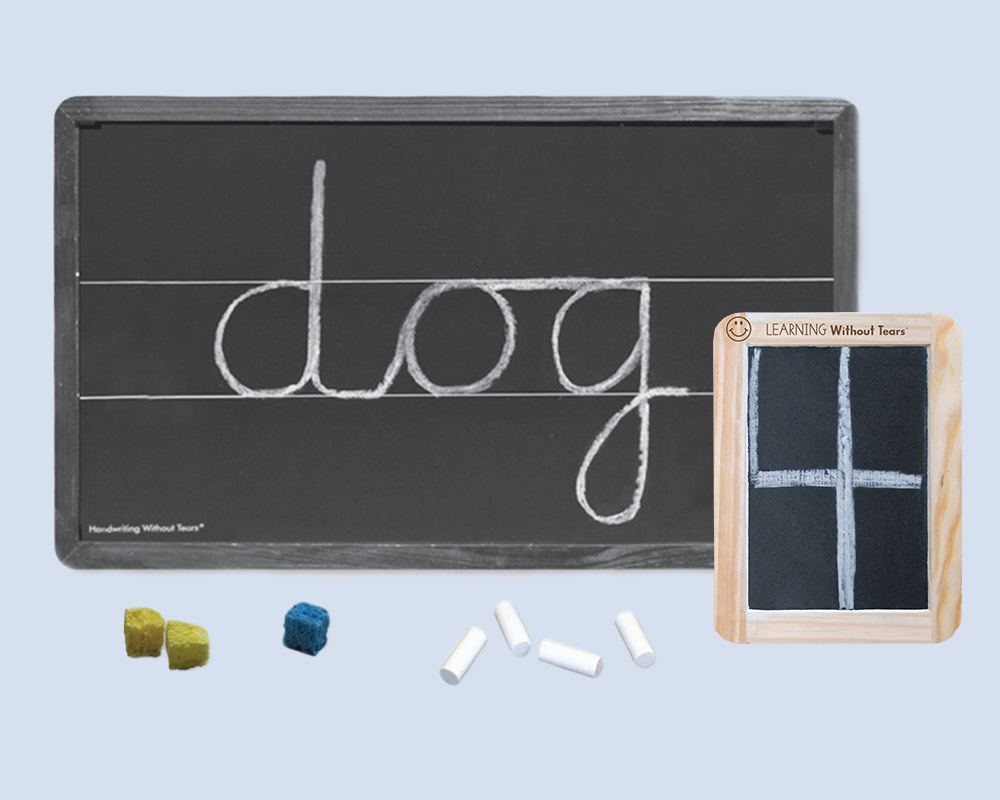
- Puzzle Time
Children enjoy putting together puzzles. Learning Without Tears A-B-C Touch and Flip’s animal puzzle is no exception. Children love to trace over the sandpaper letters on the other side of the animal puzzle and match capital and lowercase letters with the other set of cards.
Family members and teachers must model how to trace letters correctly, making sure children start at the top and follow the correct sequence.
Practice the Alphabet with Help from Learning Without Tears!
Learning Without Tears developmentally appropriate, hands-on materials help families and teachers make letter learning fun. Children will use their senses as they experience letters and learn to recognize, name, build, and trace letters and say letter sounds.
Enjoy watching videos of families and teachers using hands-on, multisensory activities and feel free to share how you use the tools on our social media pages: Facebook | Instagram | Pinterest | Twitter | LinkedIn.
A—Z for Mat Man and Me
Seamlessly bring the ABCs to life while building foundational literacy skills with our new letter book series. Each of our illustrated letter books introduces a letter of the alphabet and emphasizes their associated sound through captivating, visual stories. The engaging stories in each book capture children's imaginations and expose them to social-emotional skills and diverse cultures.
You can Learn More → .